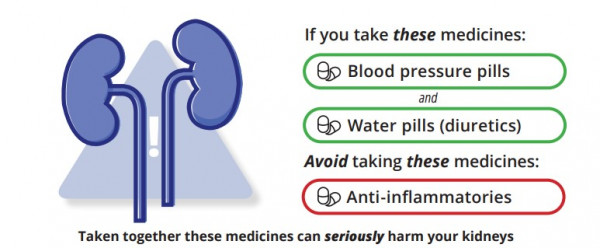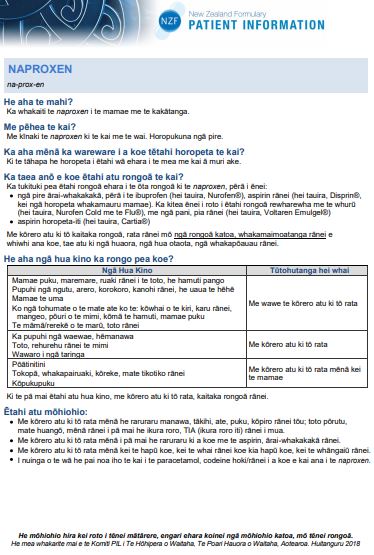Naproxen belongs to a group of medicines known as non-steroidal anti-inflammatory drugs (NSAIDs). It's used to treat different types of pain such as period pain and pain from injury or after surgery.
NSAIDs are also used to ease pain, swelling and stiffness associated with flare-ups of gout, osteoarthritis, rheumatoid arthritis and ankylosing spondylitis. NSAIDs block the inflammation process and in this way ease swelling and pain.
In New Zealand naproxen is available as tablets.
- Tablets comes as immediate release and slow release (SR).
- The immediate release tablets are useful where immediate pain relief is required, and the slow release tablets are more useful in reducing long term inflammation.
- Lower strengths of naproxen tablets (Naprogesic® and Sonaflam®) can be bought over-the-counter from a pharmacy.










